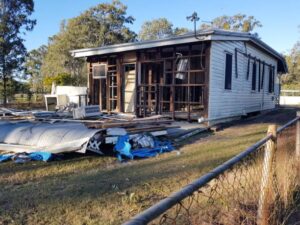Asbestos is a serious workplace hazard associated with incurable diseases such as mesothelioma, lung cancer and asbestosis. It is most dangerous when it becomes airborne.
During asbestos removal, control monitoring tests the air to check that respirable fibre levels are below the exposure standard. Clearance air testing is also necessary to test an area after asbestos removal to ensure it is safe to re-enter. For professional asbestos air testing Adelaide services, check this out.
Identify Asbestos Fibres
 Asbestos fibres can be released into the air when asbestos-containing materials (ACM) are damaged, disturbed or removed unsafely. Once airborne, they can be inhaled and lodged in the lungs, causing severe health problems.
Asbestos fibres can be released into the air when asbestos-containing materials (ACM) are damaged, disturbed or removed unsafely. Once airborne, they can be inhaled and lodged in the lungs, causing severe health problems.
Symptoms of asbestos exposure may not appear for years, even decades after initial contact. During this time, they can cause severe and potentially life-threatening diseases such as mesothelioma and lung cancer.
The most common type of asbestos found in homes is friable. This means it breaks easily into small fragments, which can be released into the air and inhaled. On the other hand, non-friable asbestos has a more robust material around it, which helps keep the fibres contained.
To determine whether a sample contains asbestos, it must be sent to a laboratory for further analysis. Our state-of-the-art mobile laboratory is NATA-accredited for asbestos air monitoring and building materials testing. The laboratory will use a method of transmission electron microscopy to reveal the kind and number of asbestos fibres present in a sample.
Remove Asbestos Fibres
When asbestos-containing materials are disturbed by touching, rubbing, or handling, microscopic fibres can be released into the air. These fibres can then be inhaled, lodging in the lungs where they can remain for years and cause serious health issues. These include lung diseases such as mesothelioma and incurable conditions such as asbestosis. For professional asbestos air testing Adelaide services, check this out.
It’s important to note that only a trained and accredited asbestos professional can take samples for analysis. If the material in question isn’t damaged and won’t be disturbed (by renovating, for example), it may not need to be tested and can safely remain undisturbed.
If the asbestos is deemed to need removal, a qualified inspector must conduct air monitoring before, during and after the removal work. This ensures that the asbestos is removed correctly and the area is safe for re-occupancy. This includes organising and conducting clearance inspections to issue the Asbestos Clearance Certificate. PLM and TEM sampling methods can be used for this purpose.
Control Asbestos Fibres
Asbestos fibres risk human health if inhaled and lodged in the lungs. Asbestos exposure can cause mesothelioma (pleural cancer) and asbestosis – both incurable diseases. These are only a few other disorders that can result from prolonged asbestos exposure.
Friable asbestos products (non-bonded) release a high volume of fibrils when sanded, scraped or otherwise disturbed. This is the reason why a licenced asbestos professional should always undertake work on such materials.
Non-friable (bonded) asbestos products, such as roof shingles and cement sheeting, are unlikely to release fibres into the air unless they are badly damaged or weathered. Static air monitoring is often required for these types of works, and the results are used to validate the effectiveness of control measures.
Greencap’s occupational hygienists also have experience conducting silica, lead and synthetic mineral fibre (SMF) air monitoring for construction projects. This can be achieved with our state-of-the-art mobile lab (Lab in a Van) or by setting up worksite-based laboratories. For professional asbestos air testing Adelaide services, check this out.
Remediate Asbestos Fibres
Asbestos fibres pose a health risk when they are inhaled. Exposure to asbestos fibres can cause various diseases, including lung cancer, mesothelioma, and pleural plaques. The latency period for these diseases can be between 20 and 50 years.
If asbestos-containing materials are in good condition and will not be disturbed (by remodelling, for example), they are unlikely to release any asbestos fibres. However, they may become damaged over time and could remove the threads.
Repairing and covering asbestos materials is usually the best solution. You must patch any holes or cracks with a commercial product designed to do so, and always wet the fabric before you apply the patch. You should also wear gloves and a dust mask when working with any type of repairs or removal.
